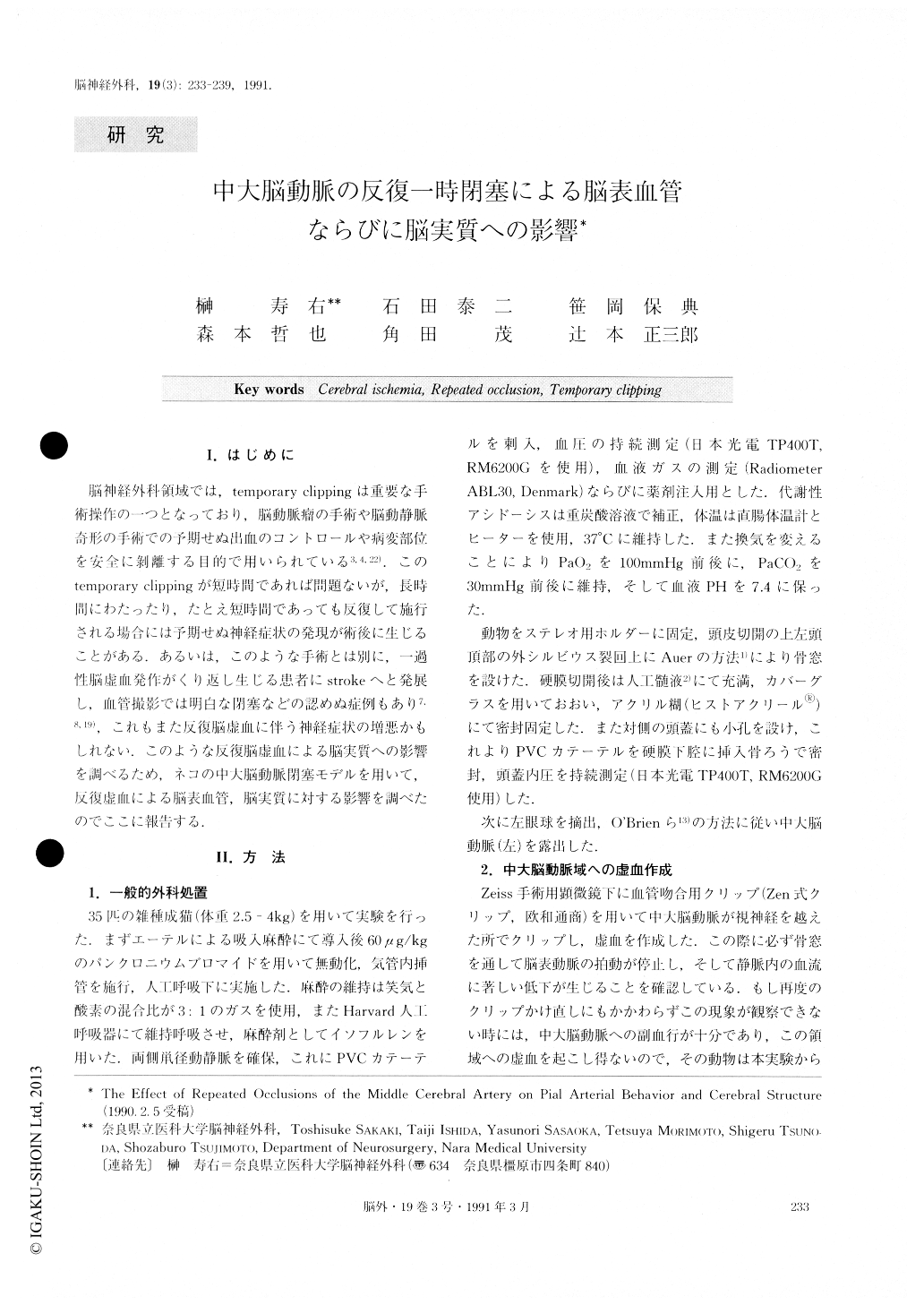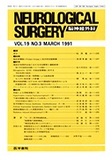Japanese
English
- 有料閲覧
- Abstract 文献概要
- 1ページ目 Look Inside
I.はじめに
脳神経外科領域では,temporary clippingは重要な手術操作の一つとなっており,脳動脈瘤の手術や脳動静脈奇形の手術での予期せぬ出血のコントロールや病変部位を安全に剥離する目的で用いられている3,4,22).このtemporary clippingが短時間であれば問題ないが,長時間にわたったり,たとえ短時間であっても反復して施行される場合には予期せぬ神経症状の発現が術後に生じることがある.あるいは,このような手術とは別に,一過性脳虚血発作がくり返し生じる患者にstrokeへと発展し,血管撮影では明白な閉塞などの認めぬ症例もあり7,8,19),これもまた反復脳虚血に伴う神経症状の増悪かもしれない.このような反復脳虚血による脳実質への影響を調べるため,ネコの中大脳動脈閉塞モデルを用いて,反復虚血による脳表血管,脳実質に対する影響を調べたのでここに報告する.
Abstract
Temporary clipping of the major arterial trunk is a very important maneuver to control excessive unex. pected bleeding during a neurosurgical operation, but repeated temporary clippings sometimes give rise to se-vere neurological deficits after surgry. In clinical prac-tice, a major stroke can occur after many transient ischemic attacks without distinct angiographic occlu-sion. To confirm and explain these clinical experiences, the present study was performed. First, 20-min, 30-min and 1-h occlusion of the middle cerebral artery was per-formed in each of 5 cats, and pial arterial behavior, cerebral edema and infarction were observed. In the 20-min occlusion group, no abnormal change was found 5 hours after recirculation. In the 30-min occlusion group, cerebral edema was present in 10.5±4.2% of the hemi-sphere, but no infarction was observed, and pial arterial caliber remained in a 10% dilated state throughout the experimental periods. In the 1-h occlusion group, cere-bral edema was present in 41.2 ± 7.5% of the hemi-sphere and infarction was found in 34.5 ± 9.5%. Pial arteries returned to a 20% dilated state but redilated by45% at the end of experiment. As the second experi-ment, three 20-min occlusions at 1-h interval and two 30-min occlusions at 1-h interval were performed in each 10 cats. Pial arteries had dilated by 40% after re-lease of the last occlusion in both groups. The extent of cerebral edema was 19.5 ± 8.1% of hemisphere in the 20-min occlusions group and 36.6 ± 9.7% in the 30 min occlusions group. The extent of infarction was 8.1 ± 3.7% of hemisphere in the former and 18.5 ± 10.1% in the latter.
These results suggest that repeated temporary occlu-sions may cause grave brain damage, even if the dura-tion of each is by itself too short to provoke ischemic brain injury.

Copyright © 1991, Igaku-Shoin Ltd. All rights reserved.


